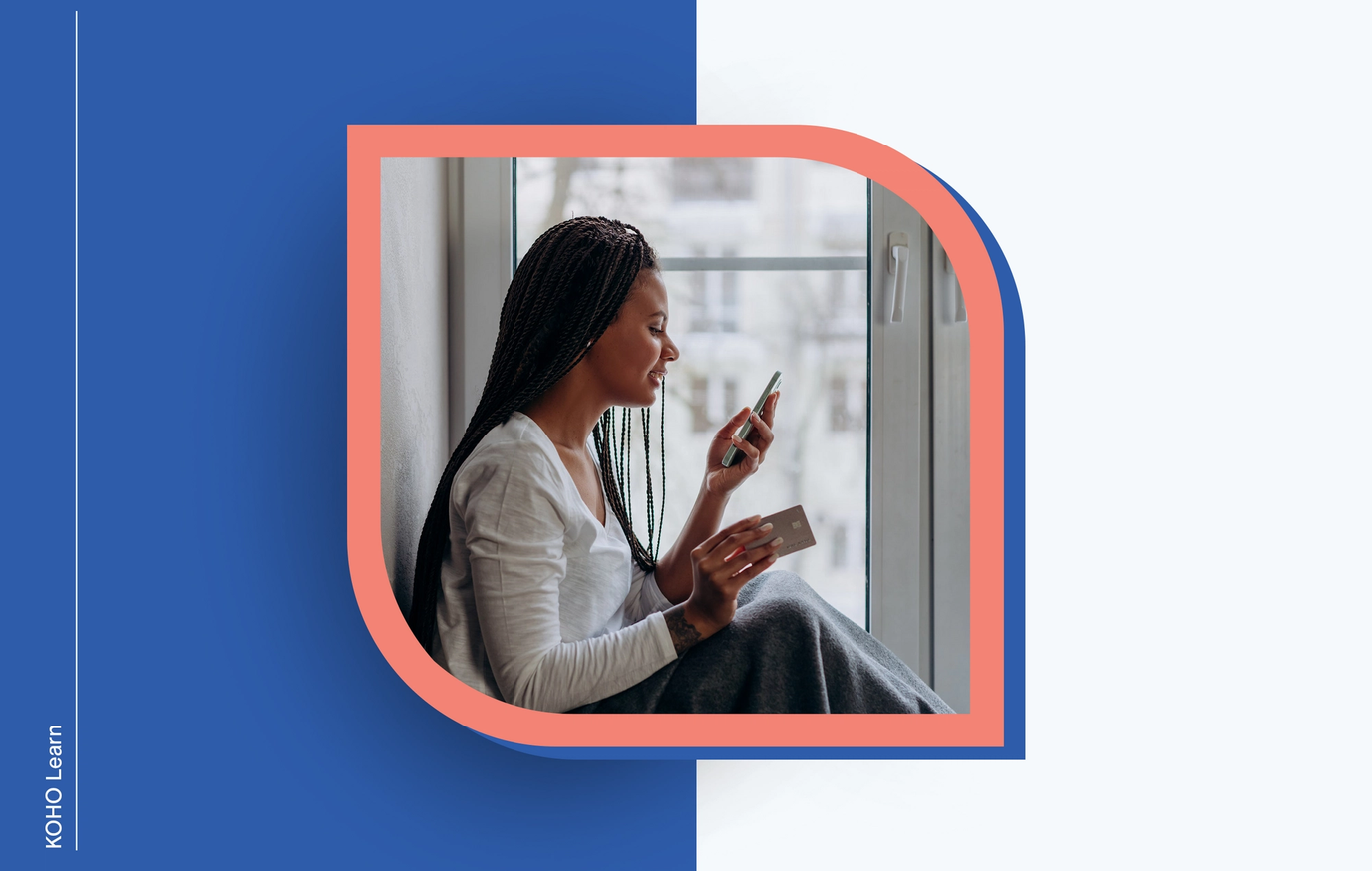
Everyone that’s made a purchase has likely had to make a refund at one time or another. Maybe the item wasn’t what you expected, or perhaps, you simply didn’t want it anymore. While getting a refund is often a pretty straightforward process, things don’t always go according to plan.
Fortunately, if you used your credit card for your purchase - instead of cash - you actually have some added protection. Here’s how credit card refunds work in Canada.
How does a credit card refund work?
A credit card refund is processed when the consumer returns an item that is defective or no longer needed. The same amount you paid would be sent back to the card you paid with. Although the original purchase would still appear on your account summary, the refund would essentially cancel out the original transaction.
For further context, whenever you purchase an item on your credit card, it shows up as a pending transaction on your account. After a few days, it’ll become an actual transaction on your account. This is beneficial to both the merchant and the customer. For the customer, you’re essentially getting a loan from your credit card provider, which you would pay back when your statement is due. For the merchant, they’re able to get paid immediately since the credit card provider would front the funds.
When making a refund, the reverse happens. The funds are taken immediately from the merchant and sent back to the consumer.
How do I request a credit card refund?
Requesting a refund is simple, but you need to follow the merchant’s return/refund policy. Some things to look out for:
Does the merchant do refunds or exchanges only?
How many days do you have to request a refund?
Do you need the original receipt to perform a refund?
Every retailer will usually have a detailed refund policy listed in-store or online. Assuming you qualify for a refund, you’d just ask the merchant for one. If you’re performing the refund in a store, you’d bring the item back, and the refund would be processed immediately. However, if you’ve purchased the item online, you’ll likely need to send the items back before a refund is processed.
What items can’t be refunded?
Although most things can be refunded, there are also quite a few items that wouldn’t qualify. Generally speaking, items that don’t qualify for a refund are consumables such as:
Fruit and vegetables
Opened cans of food or drinks
Opened cans or bottles of alcohol and wine
Lottery tickets
Downloadable products
Gift cards
In addition, things that affect personal hygiene also can’t be refunded, such as:
Underwear
Used deodorant
Used makeup
Opened bottles of shampoo and cream
Note that if the item is defective, you may still qualify for a refund. Every merchant has a different refund and exchange policy, so it’s on you to understand what rules apply. If you try to get a refund anyways, the store is within their right to refuse you if you haven’t met their refund policy.
How long does a credit card refund take?
Generally speaking, a refund should only take three to five business days after it’s processed to appear on your account. Unlike pending transactions, a pending refund won’t show up on your account. The refund will only show up in your account as a credit when it’s formally processed. Once you see that amount, the refund has been completed.
In-store refunds are easy since the merchant will provide you with a receipt showing the reversed transaction. However, if you’ve ordered online, you’re really at the mercy of the merchant. Major retailers will likely have your refund processed relatively quickly. That said, if you’ve purchased from a smaller or independent merchant, the refund may take a lot longer to appear.
What’s the difference between a refund and a chargeback?
A credit card refund is when everything goes according to plan. That’s where you return the item, and the amount you paid appears back on your credit card as a credit within a reasonable time. However, if the merchant refuses to do a refund or is taking too long, you could perform a chargeback.
A chargeback is a type of purchase insurance that most credit cards offer. Essentially, if the merchant has sold you a defective item, something that wasn’t described, or refuses you a refund, you can request a chargeback from your credit card provider.
Once you request a chargeback, your credit card provider will ask for documentation about why you should receive your money back. In this case, you would provide any supporting documents that you have. This could be receipts, e-mail correspondence about your failed refund, or pictures of the defective product. Your credit card provider will then contact the retailer to hear their side of the story.
Once your credit card provider has heard both sides of the story, they’ll make a decision. This process is usually quite quick and typically takes more than 30 days. That said, there’s usually a time limit for chargeback of 30 to 90 days from the time of purchase. That means you need to request one before the deadline passes.
If your credit card provider sides with you, you’ll likely see a credit appear on your account within 30 days.
What about points I earn on purchases that are refunded?
Any points you’ve earned from your purchases will be deducted from your account once the refund has cleared. Although this may not seem like a big deal, it may impact you in a few different ways.
Let’s say you made a major purchase to help you meet the minimum spend requirement to get the welcome bonus. As soon as the welcome bonus posts to your account, you make a refund. The welcome bonus would also be taken away since you’ve no longer met the minimum spend requirement.
Now let’s say the points you’re earning get transferred automatically when your statement posts. This is common for co-branded travel rewards programs such as Aeroplan. Since the points have already been transferred, if you performed a credit card refund, you would have a negative balance of points.
To avoid this from happening, just ensure you’ve spent more than enough to meet the minimum spend requirement. Your welcome bonus would only be clawed back if you fall below that threshold.
What happens to credit card refunds if I currently don’t have a balance?
If you currently have a $0 balance on your credit card and you request a credit card refund, you will have a negative balance. That balance would offset any future purchases you make. Once you’ve used up the entire negative balance, you will start to see a positive balance on your account again.
Occasionally, you may need to make a refund on a credit card you no longer use. Having a negative balance may not be ideal, but you still have some options. If you have more than one credit card with the same provider, you could ask for that negative balance to be transferred to your other card. Alternatively, you could ask for a cheque. The cheque will take longer since it needs to be mailed to you, but at least you don’t need to worry about using that card anymore.
Now let’s say you need to make a return, but you’ve cancelled the credit card that you used. Many people will assume that the merchant can just provide you with a cash refund, but that may be against their policy. It’s not uncommon for retailers to only issue refunds to the same credit card used. In this case, you’d have to accept the refund. You would then contact your former credit card provider to get that refund back. If you happen to bank with them, they could move that money to your chequing or savings account. The alternative is to request a cheque.
Does a credit card refund affect my credit score?
In most cases, a credit card refund will have no effect on your credit score. That said, a refund would affect your credit utilization rate, which is one factor that determines your credit score. Your credit utilization is how much credit you’re using relative to how much total credit you have.
For example, let’s say your credit limit is $10,000, and you currently have a balance of $4,000. That would put your credit utilization ratio at 40%. Now let’s say you did a credit card refund of $1,000. Your new credit utilization ratio would be 30%. That could benefit you since the two credit bureaus typically prefer consumers to have a utilization ratio of 30% or less.
However, note that you wouldn’t consistently be doing refunds, so if you normally carry a higher balance, your credit utilization ratio would be higher the next month. If you want to keep your utilization ratio low, you could ask for a credit limit increase.
The bottom line
Whenever you make a purchase, use your credit card since it gives you some purchase insurance. If you ever need to make a refund, check with the store policy and initiate one before your deadline. If the merchant is slow to respond or refuses your refund, you could attempt a chargeback.

About the author
Barry Choi is an award-winning personal finance and travel expert. He regularly appears on various shows in Canada and the U.S., where he talks about all things money and travel. His website - Money We Have - attracts thousands of visitors daily, looking for the latest stories on travel and money.
Read more about this author